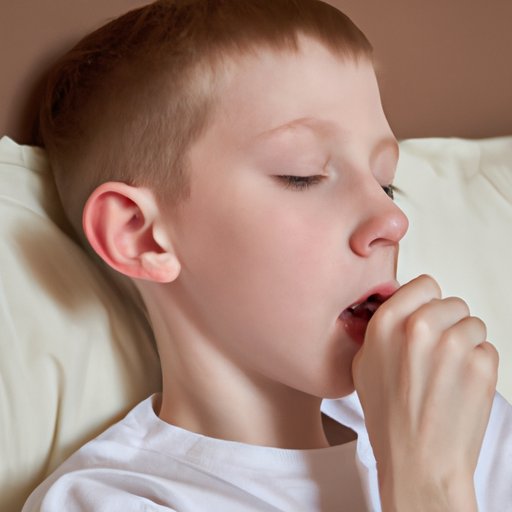Introduction
Croup cough is a common viral respiratory infection that affects many young children. Also known as laryngotracheobronchitis, this condition can cause discomfort and difficulty breathing, and can sometimes lead to more serious complications.
As a parent or caregiver, it is important to recognize the symptoms of croup cough and know your treatment options in case your child develops the condition. This article will provide a comprehensive guide to understanding croup cough, including its symptoms, causes, treatment options, and ways to prevent infection.
Croup Cough Explained: Understanding Symptoms, Causes, and Treatment Options
Croup cough can be easily recognized by its telltale symptoms, which include a barking cough, hoarseness, and difficulty breathing. Children with croup cough may also experience a fever, a runny nose, or a sore throat.
The condition is caused by a viral infection that affects the upper respiratory tract, including the larynx, trachea, and bronchi. The most common viruses that cause croup cough are the parainfluenza virus, the respiratory syncytial virus (RSV), and the adenovirus. It is highly contagious and can be spread by coughing, sneezing, or touching contaminated surfaces.
Treatment options for croup cough vary depending on the severity of the condition. Mild cases can be managed with self-care treatments, such as increased fluid intake and humidified air. In more severe cases, medical attention may be necessary, and doctors may prescribe medication or hospitalization if needed. Nebulized epinephrine and corticosteroids are the most commonly used medications for managing croup cough.
The Croup Cough: How It Affects Children and When to Be Concerned
While croup cough can affect anyone of any age, it is most common in children under the age of six years old. This is because their airways are smaller and more susceptible to swelling and inflammation, which can make it difficult for them to breathe.
Signs for parents or caregivers to look out for as the condition progresses include worsening cough, increased respiratory distress, and stridor, or a high-pitched breathing sound. If your child experiences any of these symptoms, it is important to seek medical attention immediately.
In severe cases, croup cough can lead to complications such as pneumonia, respiratory failure, or even death, highlighting the importance of prompt treatment and monitoring.
Preventing Croup Cough: Tips for Reducing the Risk of Infection and Managing Symptoms
Preventing the spread of croup cough can be challenging, but there are some strategies you can use to reduce the risk of infection and minimize your child’s symptoms. Good hygiene practices, such as frequent hand washing and avoiding close contact with sick individuals, can help to prevent the spread of the virus.
If your child develops croup cough, there are several natural remedies and medications that can help to manage their symptoms. Keeping your child well-hydrated and providing them with humidified air can help to relieve their cough and breathing difficulties. Over-the-counter pain relievers or cough suppressants may also be recommended by your doctor.
The Science of Croup Cough: What Happens in the Body and Why
Croup cough is caused by a viral infection that affects the lining of the upper respiratory tract, leading to inflammation and swelling of the airways. This can make it difficult for air to pass through the airways and can cause the characteristic barking cough associated with the condition.
The reason why croup cough is more common in children than in adults lies in the structure of their airways. In children, the airways are narrower and more susceptible to swelling and inflammation. The vocal cords are also more vulnerable to irritation, which can make it difficult for them to breathe.
Croup Cough in the Time of COVID-19: What Parents Need to Know
While the COVID-19 pandemic has increased awareness of respiratory health in general, it has also changed the way we manage and treat conditions like croup cough. As with any respiratory illness, prevention is key, and parents and caregivers should take extra precautions to reduce the risk of infection.
If your child develops croup cough during the pandemic, it is important to seek medical attention promptly. Health care providers are taking extra precautions to protect patients and families from exposure to COVID-19, and they can help to manage your child’s symptoms while minimizing the risk of infection.
Conclusion
Croup cough is a common respiratory infection that can cause discomfort and difficulty breathing in young children. Understanding its symptoms, causes, and treatment options is essential for prompt and effective management of the condition.
Parents and caregivers should be aware of the signs of croup cough and seek medical attention promptly if their child experiences worsening cough or breathing difficulties. By taking steps to prevent infection and manage symptoms, we can help to keep our children healthy and safe.
